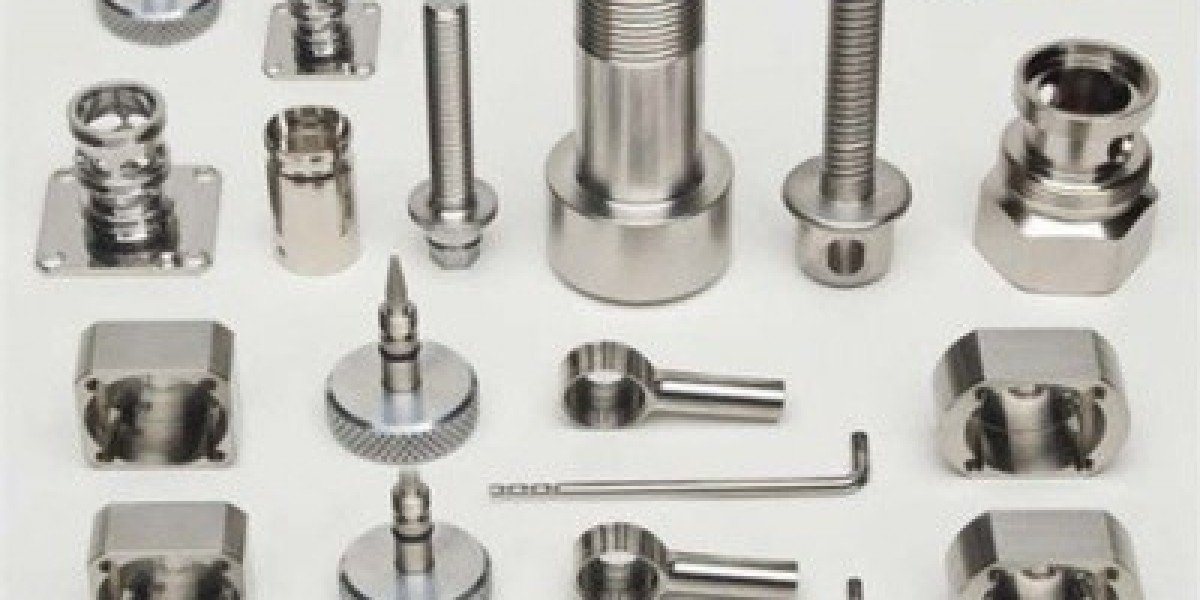Stainless steel turned parts are crucial components in many industries, offering a blend of strength, durability, and resistance to corrosion. This article provides an overview of stainless steel turned parts, including their characteristics, manufacturing process, applications, and benefits.
What Are Stainless Steel Turned Parts?
stainless steel turned parts are components made from stainless steel, created through a turning process. Turning involves rotating a steel workpiece on a lathe while a cutting tool removes material to shape the part according to specific design requirements. Stainless steel is chosen for its superior properties, making it ideal for demanding applications.
Characteristics of Stainless Steel
Corrosion Resistance: Stainless steel is known for its exceptional resistance to corrosion and rust, making it suitable for environments exposed to moisture, chemicals, or harsh conditions.
Strength and Durability: Stainless steel is robust and durable, capable of withstanding high stresses and impacts, which is ideal for parts that must endure significant wear and tear.
Aesthetic Appeal: The material has a shiny, attractive surface finish that is often desirable for visible parts and products.
Heat Resistance: Stainless steel can endure high temperatures without losing its structural integrity, making it suitable for applications involving heat.
Machinability: While stainless steel is more challenging to machine compared to materials like brass or aluminum, advancements in tooling and techniques have made it feasible to achieve high precision.
Manufacturing Process
The production of stainless steel turned parts involves several key steps:
Material Selection: Choose the appropriate stainless steel grade based on the required properties and application. Common grades include:
- AISI 304: General-purpose stainless steel with good corrosion resistance.
- AISI 316: Marine-grade stainless steel with enhanced corrosion resistance.
- AISI 410: Heat-treatable stainless steel with good hardness and wear resistance.
Turning: The stainless steel rod or bar is secured on a lathe. As the lathe rotates, a cutting tool removes material to shape the part according to the design specifications.
Finishing: Post-turning, the part may undergo additional processes such as polishing, grinding, or coating to achieve the final surface finish and dimensional accuracy.
Heat Treatment: Some stainless steel parts may require heat treatment to improve their mechanical properties, such as hardness and strength.
Inspection: The finished parts are inspected for quality, precision, and adherence to required tolerances and specifications.
Applications of Stainless Steel Turned Parts
Stainless steel turned parts are used in a variety of industries and applications, including:
- Automotive: Components like fasteners, trim parts, and exhaust system components that need to withstand high temperatures and corrosive environments.
- Aerospace: Parts such as engine components, landing gear, and structural elements requiring high strength and resistance to extreme conditions.
- Medical: Surgical instruments, implants, and diagnostic equipment where hygiene, biocompatibility, and precision are critical.
- Food and Beverage: Equipment and processing components that must meet strict hygiene standards and resist corrosion.
- Construction: Structural components, fittings, and fasteners used in building projects that require durability and an attractive finish.
Benefits of Stainless Steel Turned Parts
Exceptional Corrosion Resistance: Stainless steel’s resistance to corrosion extends the lifespan of components and reduces maintenance needs.
High Strength and Durability: Stainless steel provides excellent mechanical properties, suitable for high-stress and heavy-duty applications.
Aesthetic Quality: The shiny surface finish of stainless steel enhances the appearance of parts, making them suitable for visible applications.
Temperature Resistance: Stainless steel's ability to endure high temperatures makes it ideal for applications involving heat.
Hygiene and Cleanliness: The non-porous surface of stainless steel makes it easy to clean, which is important for medical and food-related applications.
Challenges and Considerations
Machinability: Stainless steel is harder to machine than some other materials, potentially requiring specialized tools and techniques to achieve precise results.
Cost: Stainless steel can be more expensive than other materials, so budget considerations should be factored into the planning stages.
Heat Treatment: Proper heat treatment is necessary to ensure desired properties and avoid issues such as brittleness.
Conclusion
Stainless steel turned parts offer a combination of strength, durability, and corrosion resistance, making them suitable for a wide range of applications. By understanding the material's characteristics, manufacturing process, and benefits, you can make informed decisions and ensure high-quality outcomes for your projects



